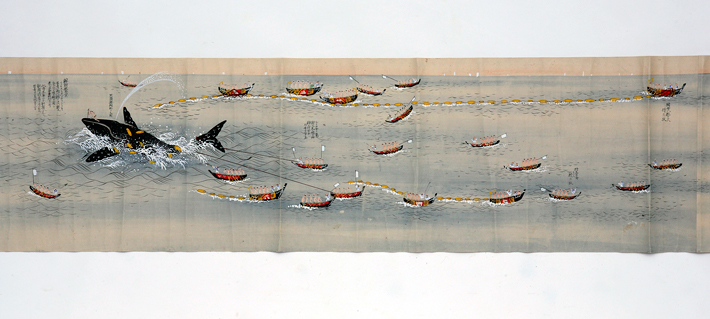Nanki Kumano’s culture has developed owing to various traffic such as the passing route between the steep mountains, the river flowing through these mountains, and the ocean which connects coast to coast.
In the mountains, beliefs and religions towards nature has been recognized such as deep forests, waterfalls, huge rocks, and enormous trees. The Nachi Waterfall, which is the deity of the Kumano Nachi Taisha Grand Shrine and is registered as a national historical site, is a good example. Based on these awe-inspiring senses, the Kumano faith, a syncretistic fusion of Shintoism and Buddhism was born, and the Pilgrimage to Kumano had extensively been performed in the Heian Period. The pilgrimage had been friendly to females and to people with special needs from the early stage, so many people from Emperors to commons had visited this area. Thus, the pilgrimage to the Kumano Shrine is also called “the Kumano pilgrimage of Ants”. The pilgrimage road “Kumano Kodo” was registered as “Sacred Sites and Pilgrimage Routes in the Kii Mountain Range” by the World Cultural Heritage in 2004.
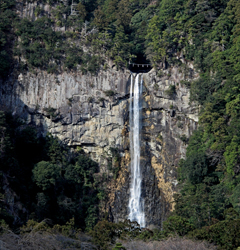
Nachi Waterfall
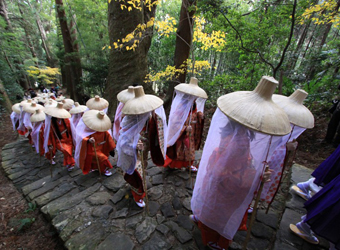
The Kumano Pilgrimage
The plentiful supply of forestry resource and the river flow among the steep mountainside of the Kitayamagawa area had supported the locals’ economy and their living. The lumber would be carried down to the river by a wooden sleigh or a wooden slide called Shura, and then was transported to the mouth of the river (Shingu City) by building a raft with it and riding on it. The history of this lumbering had led to the existence of the one and only detached territory in Japan, Kitayama Village, when the abolishment of the feudal domains and the establishment to prefectures had been enforced in the Meiji period. The choice was made for them to remain as a village of Wakayama prefecture for their strong connection between the people and culture through the river.
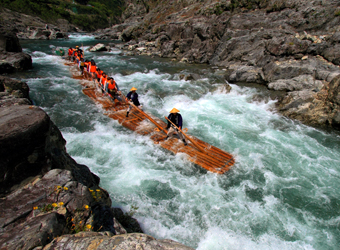
Rafting in Kitayama Village
Also, there had been riverboats going up and down the stream of the Kumano River to carry people and products since the ancient times including the Imperial families and aristocracies of the Heian period to take them to visit the Kumano Shrine. In the Edo period, a large boat called “Danpei-bune” made its appearance, followed by propeller ships and jet ships in the recent years to make improvement of the transportation capacity. The Kumano River and the Kitayama River had acted as a ‘road’ between the mountainous area and the estuary area.
In the same way, the areas of the Hiki-gawa River, the Koza-gawa River, and the Ota-gawa River mouths had developed into towns as a connecting route of products from the sea and the mountain.
There were cargo vessels (Taru vessels, Higaki vessels, and Shingu vessels) at Tonda (Shirahama) and Shingu in the Edo period that carried rice, liquor, soy-sauce, charcoals, lumber, medicine, fuel, clothing, and armors to and fro Edo and Osaka. Ships called ‘Isaba-bune’ had been used for short distanced transportations and the coastal area of Kumano was the main artery of long and short distanced marine traffic.
On the other hand, the eastern part of the cape of Shiono-misaki is famous for its strong currant and violent waves. For it was extremely difficult to sail west against the Kuroshio Current, it was known to be a dangerous traffic point, so the people made use of Mt. Chojoyama in Kushimoto Town, Toumyozaki and Kantorizaki capes in Taiji Town, the Nachi Waterfall of Nachikatsuura Town, and Mt. Kamikura in Shingu City as a landmark (guide) to sail their ships safely.
This area still remained to be dangerous in the Meiji period, as you might know, the British vessel Normanton and the Turkish battleship Ertugrul had suffered shipwrecks among these dangerous waters. So as a safety measure, a Japan’s first western-styled stone-made lighthouse was built in Kashinozaki, and a western-styled wooden lighthouse (also a Japan’s first) was built in Shinomisaki.
After the Meiji period and up to now, the sea of the Kii Peninsula still remains to play an important role of the marine traffic; both domestic and international. You can see numbers of ships sailing off the coast of Shionomisaki.
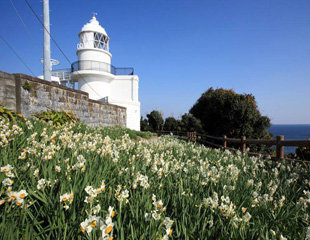
The Kashinozaki-todai Lighthouse
The beautiful scenery of these mountains and the ocean impressed many people including Shimpei Goto and Takuji Ogawa, which led to registering the area as the Yoshino Kumano National Park on February 1936 for the citizens to come and relax.
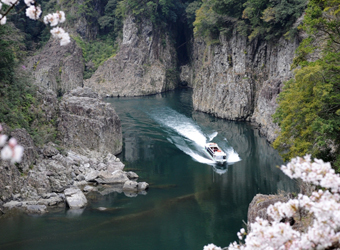
The Dorokyo Gorge
Along the coastal area between Koza, Kushimoto Town and Shingu City, old-style whaling had long been performed. Taiji Town has been functioning as a whaling base since the old times, passing down the Japanese whaling culture from generation to generation.
